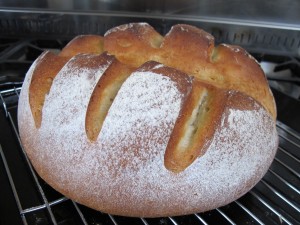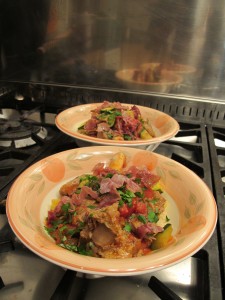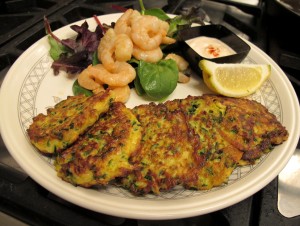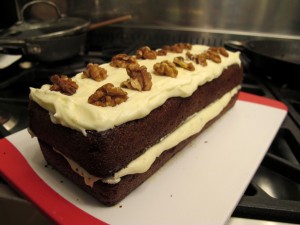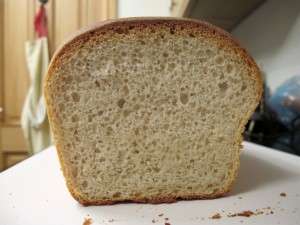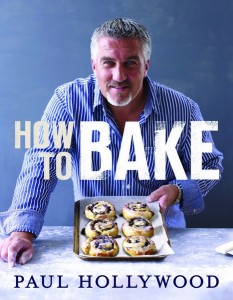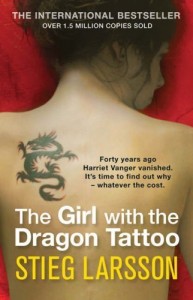I took a chance with this one and used some double cream to semi-skimmed milk to replace full fat milk! It was fine though. The loaf was soft and sweet./ It reminded me a little of commercial sliced white loaves e.g. Warburton. I was worried about the soft crust but apparently you never get a hard crust when you add milk.
Slow braised lamb with peppers
I made this based on the recipe from Rick Stein’s Spain. I made it using 2 large lamb shanks and halved the other ingredients in the recipe.
I didn’t have any fresh or dried peppers so just added roasted ones from a jar. I also substituted Parma ham for Serrano and I didn’t add it to the stew, just lightly fried to crisp it up as a garnish.
After 1.5 hours of cooking at 150C, I tested the meat – it was done. I took both shanks out and let them cool, then took the meat off the bones in large ‘natural’ segments. I also got rid of any stringy or jellyish bits from the meat and the bones. I then covered the meat and bones back up with the sauce and put the whole lot in the fridge to be eaten sometime in the next couple of days. The fat will rise to the top and solidify so it will be easy to remove it before adding peppers and gently reheating.
When I reheated this I added a chopped courgette that needed using up. The flavour of the courgette went with the stew but it had the unwanted side-effect of making the stew watery. Otherwise, apart from a lack of garlic – I forgot to apply my usual rule of always doubling the amount of garlic – this stew was quite nice.
Courgette fritters
I needed to use up some courgettes so made fritters using this recipe. They tasted good but there was way too much egg in it so they were more like mini omelettes. Next time I will only use one egg. I served the fritter-omelettes with king prawns fried in butter and a little olive oil, garlic and a smattering of chilli powder. When the prawns were just done I added a little lemon juice so the pan juices made a nice little dressing for salad leaves. To pimp your ride as Jamie Oliver puts it, I served with some greek yoghurt with hot paprika, a sprinkle of salt and a few drops of EV olive oil stirred in and also a wedge of lemon.
Normally I would use Nigella’s courgette fritters recipes but I didn’t have any feta. Though her recipes needs modification: you do need to add salt to extract water, not just lay them on a tea towel as she recommends.
Carrot cake without dried fruit
Used Jamie Oliver recipe with the following changes:
I only used 60% of the amounts, apart from the carrot which I forgot to scale down!
Dark brown soft sugar instead of light
0.5 cups orange juice instead of zest and juice of an orange
Verdict: The cake was heavy and chewy but it tasted and looked good. Those qualities weren’t enough to redeem it though; next time I am going to follow the recipe!
Penguins – Spy in the Huddle
Basic white tin bread
Nigella’s greek lamb stew
I watched this last night on a Nigella Bites repeat on the Good Food channel. It occurred to me that I’ve made it several times over the past few years – it’s always a winner for feeding friends – but have never blogged about it. This is Nigella’s recipe, from How to Eat:
Ingredients
4 tablespoons olive oil
2.5 kg boned shoulder of lamb, trimmed of excess fat and cut into cubes about 6 x 3 cm
750g or about 5 medium onions, sliced finely
Salt
4 garlic cloves, minced
2 celery stalks, minced
Leaves from 4 thyme sprigs
1 teaspoon dried oregano
3 bay leaves
2 carrots, peeled, halved lengthways, and then halved across
3 400g tinned chopped tomatoes
300ml lamb stock or water
1 bottle dry white wine
Freshly ground black pepper
500g ditalini or other small tubular pasta
300g feta cheese
finely chopped parsley, oregano or basil leaves
Directions
Preheat the oven to 160C.
Into the largest saucepan or casserole you have that will go into the oven, pour 3 tablespoons of the oil. Brown the meat in batches over high heat and remove with a slotted spoon to a plate nearby. You may need more oil as you do this. The onions will certainly need it, so pour the remaining oil or add more, add the onions, sprinkling a little salt over them and cook then until soft and translucent. Add the garlic, celery, thyme, and oregano. After a couple of minutes or so, when the smell of garlic wafts up, remove half the mixture. Add the meat to the mixture in the pan, cover with the remaining half, add the bay leaves, carrots, tomatoes, stock and wine. I use a big but flattish casserole and this amount of liquid covers the meat, but if you find you need more liquid, add water- you want a lot of liquid, because you will, eventually, be cooking some pasta in it. Bring to a boil, remove scum, and let bubble for about 3 minutes. Then cover, transfer to the oven, and bake for about 2 to 2 1/2 hours, or cook on a very low heat. The meat should be tender and yielding. Remove the carrots (and eat, cook’s treat) and bay leaves, too, if you want, and season, to taste, with the salt and pepper.
Of course you can proceed to the final stage now, but I am presuming you’re not going to. In which case, let the stew cool and keep it in the refrigerator until you want it. Skim the fat off the top, and do remember to take it out of the refrigerator a good 1 to 2 hours before you cook it again. You can reheat this in the oven, but because the pasta will be put in on the stove, I tend to heat it there. Make sure the stew is piping hot. Meanwhile, bring a large pot of water to a boil. When it boils, add the salt and then pasta. Cook this until it’s nearly but not quite cooked; it should have a couple of minutes still to go.
Then drain the pasta and add it quickly to the bubbling juices in the casserole, making sure first that there are enough bubbling juices. You don’t want the meat to be drowned, but you want enough for the pasta to be covered. The pasta will absorb some of the liquid as it finishes cooking, of course.
In a couple of minutes, the pasta should be cooked. Crumble some feta and put in a bowl with the chopped parsley, oregano, or basil. Stir to combine and then leave the spoon with it, so that people can sprinkle the herb-spiked cheese over the stew as they wish. Ladle the stew into shallow soup bowls.
My adaptations:
I only use 2 tins of tomatoes and I double the amount of garlic. I leave out the pasta if it’s just for Mark and myself as he’s not that keen but it’s good to add the pasta for guests as they all seem to love it. Be prepared to add more water/stock with pasta though as it absorbs liquid all the time it’s in the stew.
Women in India
The Girl with the Dragon Tattoo
I had meant to read this for some time as several people I know recommended it. I was happy when it was chosen as this month’s reading group book. But, disappointingly, it’s a thumbs down from me.
I found roughly the first third quite boring. There are many characters introduced and they all seem very two-dimensional and indistinguishable from one another. The style of the novel reminds me of Dan Brown, but without being quite as sensational and with far less description. I found the solution to the central mystery quite ridiculous. Another aspect I didn’t enjoy was the product placement sprinkled all over the place.
The only part of this book I really enjoyed was the confrontation between the hero and the villain. That was pretty exciting and would be a fantastic on screen. I haven’t seen either of the films that have been made of the book but I’m sure they could be very good indeed; there’s a reasonably engaging plot once it picks up. However, it falls short as a book because there’s nothing there to make the reader sympathise with any of the characters because he/she just doesn’t get to know them. There’s more written about what people eat than about what they are really like.
I don’t know how much of this is down to translation but the style of the writing is very dull and wooden. The book tells you a lot about what happened and what people said but not how they said it or what they felt. Perhaps it’s because SL was a journalist so was used to writing in that style? Whatever the reason, this book just didn’t make its mark on me.
Crunchy new potatoes and creamy horseradish dip
The potatoes are adapted from a BBC Good Food recipe. I made them to accompany homemade smoked trout. I served them together with undressed salad leaves.
Boil new potatoes until they are done (about 10 mins). Drain and allow all steam to evaporate. Place on a greaseproof sheet lightly crush, drizzle with olive oil, sprinkle with salt and gently toss. Bake on a greaseproof sheet on an oven tray at 175C with fan for 15-20 mins or until there are lots of crispy brown edges. These can be flavoured with paprika and the like.
10 Mar 2013
If the new pots are large enough for it to be practical, after cooking and cooling cut in half and score as you would a mango hedgehog. Cook with the scored side facing downwards for about 10 mins, then turn over to brown the skin side.
The dip was adapted from a Jamie Oliver recipe. I wanted a condiment to eat alongside rather than a pate which incorporated the smoked trout. So I put 125g cream cheese, 2 heaped tsp grated horseradish (not sauce), fried onions (I had no chives) and lemon juice into the mixer. I seasoned with pepper. It turned out really well but a little too lemony; you don’t need all the juice of half a lemon so start with half of that.
